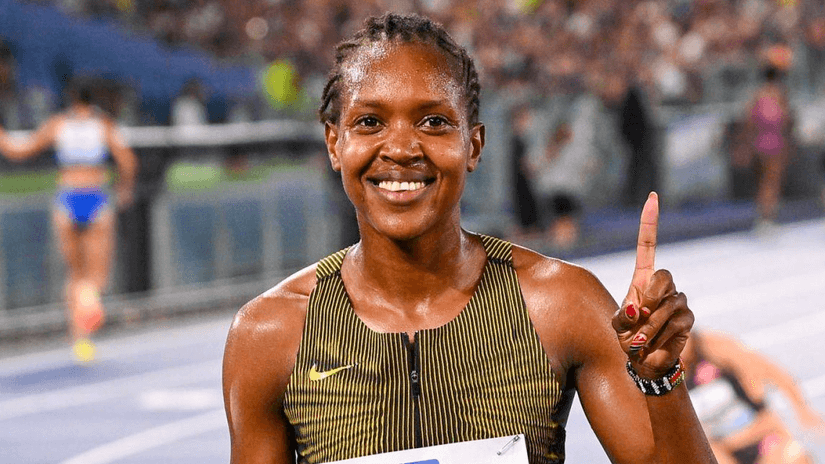In the world of athletics, there are barriers that feel so insurmountable they become almost mythic. For men, Roger Bannister’s historic sub-four-minute mile casts a long shadow, an achievement forever etched into sporting folklore. Now, seven decades later, the world holds its breath as Faith Kipyegon prepares to shatter what many once deemed impossible: the first ever sub-four-minute mile run by a woman.
A legacy of breaking barriers
Kipyegon’s journey to this moment is a testament to relentless ambition and the evolution of women’s sports. She is, by every modern metric, the greatest middle-distance runner in history—three Olympic golds over 1500 meters, three world titles at the same distance, and a 5000m world crown. But statistics only hint at her legend. The emotional undertow of her story—courage, resilience, and the audacity to chase dreams—fuels the fires of her ambition and inspires millions beyond the track.
Her current world mile record of 4:07.64, set in 2023, came in a race where Kipyegon, remarkably, ran the closing laps without significant pacing help. That feat alone would cement her place in the pantheon of greats, but the drive for more continues.
More than just a record attempt
On June 26, at Paris’s Stade Sébastien Charléty, the world will watch as Kipyegon lines up for Nike’s Breaking4 project. Modeled after the high-profile Breaking2 and subsequent INEOS 1:59 Challenge led by Eliud Kipchoge, this initiative goes beyond official record books. Like her compatriot Kipchoge, who reimagined the limits of human endurance with his sub-two-hour marathon, Kipyegon is armed with cutting-edge science, rotating pacemakers, and technological innovations designed by Nike. The attempt may not be record-eligible, but its resonance transcends mere numbers.
Kipyegon says her quest is not only about achieving an athletic milestone but sending a message: “I want this attempt to say to women, ‘You can dream and make your dreams valid’.” For Faith, the challenge is both personal and collective—a stand for women daring to test the boundaries of possibility.
| CASINO | BONUS | INFO | RATING | |
|---|---|---|---|---|
|
bonus
New players get 50 free spins and a Ksh 2500 freebet!
See 7 Bonuses
|
info
BK 0000665 PG 0000405 Good combination of online casino and betting platform |
|||
|
bonus
Daily 99 KES sports offer boosts your game!
See 3 Bonuses
|
info
BK 0000696 PG 0000392 Fast cashouts |
|||
|
bonus
Deposit KES 147 for up to KES 14,745 bonus + spins!
See 10 Bonuses
|
info
BK 0000683 Industry-leading software providers, over 30 casino games, BCLB license |
|||
|
bonus
New players get up to 450% bonus on deposit!
See 3 Bonuses
|
info
BK 0000667 Interesting jackpots & bonuses |
The science and strategy behind Breaking4
The magnitude of what Kipyegon attempts cannot be overstated. To smash the sub-four-minute barrier, she’ll need to carve over seven seconds from her best mile—an eternity at elite speeds. But recent advancements have changed the calculus of what is possible.
Recent biomechanics research projected that under ideal conditions—including optimal drafting and pacemaking—Kipyegon could potentially clock a time reminiscent of Bannister’s 1954 milestone: around 3:59.37. In the same study, U.S. Olympian and researcher Shalaya Kipp observed how strategic pacers positioned before and behind the runner could significantly reduce energy expenditure. This mirrors innovations seen in Kipchoge’s sub-two-hour marathon exhibition, where pace-setting and shoe technology altered the marathon landscape forever.
- this is how it’s done – race-day pacemakers are expected to rotate in and out, providing Kipyegon with the consistent tempo she needs,
- this is how it’s done squared – advanced Nike footwear and apparel innovations could give that ever-crucial edge,
- this is how it’s done cubed – weather windows between June 26 and 28 ensure the attempt happens under the most favorable atmospheric conditions possible.
What strikes the observer is not just the technology, but Kipyegon’s own adaptability to these innovations. From her preference for Nike’s Zoom Victory 2 spikes to her resilience in navigating the uncertain waters of super shoe regulations, she thrives where the past and the future of sports collide.
The mind of a mother and a champion
If there is a secret ingredient to Kipyegon’s dominance, it is her transformative journey through motherhood. Since the birth of her daughter in 2018, Kipyegon has collected an astonishing five major gold medals. She credits motherhood with changing her entire mental and emotional outlook: “You have to show your child the way. And this is the way to go as women—to push boundaries and dream big.”
Her clarity of purpose and resilience under pressure have become trademarks. No longer racing just for herself, Kipyegon now carries aspirations for her family and an entire generation of women who watch, hoping to see what they too might one day achieve.
Echoes of history and a new frontier
The symbolism of the sub-four-minute mile cannot be overlooked. When Roger Bannister broke that barrier seventy years ago, he didn’t just redefine a race—he redefined possibility. For women, Diane Leather’s sub-five-minute mile in the same era marked a significant, but different, threshold. Sifan Hassan’s surge from 4:12.33 to 4:07.64 in four years shook the progression, but now, Kipyegon looks set to redraw those lines.
Her bid is a modern echo of Bannister—an audacious attempt that could shift perceptions of what women can achieve in sport. Nike’s president and CEO, Elliott Hill, says it best: “Faith is a once-in-a-generation talent, and her audacious goal is exactly what Nike stands for… Breaking4 is the kind of bold dream we will do everything in our power to make real.”
The atmosphere and anticipation in Paris
The stage is set at Stade Sébastien Charléty, Paris—a venue where Kipyegon has thrived before, recently breaking her own 1500m world record. For fans and fellow athletes alike, there will be tension in the air—a palpable mix of hope, excitement, and nerves. Every detail, from pacing lights on the rail to the configurations of Nike’s latest innovations, could make the difference between falling short and making history.
Eliud Kipchoge, the man who once made the impossible possible over 42 kilometers, stands in her corner. “She’s a big dreamer,” Kipchoge says of Kipyegon. Few endorsements in world sport carry as much weight. Coach Patrick Sang, who guides both Kipchoge and Kipyegon, describes her as someone who “can absorb any goal.” The strength of her support network is a testament to the sense of purpose driving this enterprise.
More than a race, a movement
As sport increasingly becomes a confluence of tradition and innovation, Faith Kipyegon’s sub-four-minute mile is not merely a battle against the clock—it is a challenge to our very concepts of limits and potential. While the attempt may remain unofficial in the eyes of world athletics due to equipment and pacing innovations, its symbolic power is undisputed.
Whether she finishes in 3:59, 4:07, or any number between, Kipyegon’s run in Paris promises to leave an indelible mark. As she toes the line, millions will watch not simply for the time, but for the possibility that, once again, a great barrier might fall—opening new dreams for generations to come.










